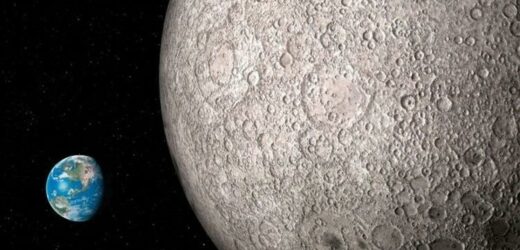Black holes: Expert explains use of gravitational wave telescope
We use your sign-up to provide content in ways you’ve consented to and to improve our understanding of you. This may include adverts from us and 3rd parties based on our understanding. You can unsubscribe at any time. More info
Gravitational waves are ripples in the fabric of spacetime that are created by accelerating masses and spread out from their points of origin at the speed of light. First predicted in the early 1900s by the French mathematician Henri Poincaré and the German-born theoretical physicist Albert Einstein, they have recently come into their own as a way for astronomers to probe spectacles invisible to electromagnetic observatories. In particular, they can open a window to some of the cosmos’ most violent phenomena — from supernovae to merging black holes and even the universe’s origins in the big bang.
There are a number of gravitational wave detectors presently in operation, with arguably the most prominent being those in the LIGO–Virgo–KAGRA collaboration, which comprises three “laser interferometers” based in the US, Italy and Japan, respectively.
These detectors work by using twin lasers to measure even the tiniest changes in distances — and are capable of detecting gravitational waves with frequencies in the range of 1–1,000 hertz.
In contrast, an alternative approach works by measuring subtle variations in the periodic signals received from pulsars, spinning neutron stars that emit beams of radio waves in a manner not dissimilar to the rotating beacons of lighthouses.
This setup is capable of detecting lower-frequency gravitational waves in the nanohertz range as are caused, for example, by the merging of supermassive black holes.
What this means is that, together, current detectors have a sizeable blind spot across the microhertz range which lies between these two frequency bands — and therefore are incapable of detecting the kind of gravitational waves that physicists expect to be generated as pairs of supermassive black holes orbit each other in the final stages before colliding.


Theoretical physicist Dr Alexander Jenkins of University College London and his colleague Dr Diego Blas of the Autonomous University of Barcelona are, as the former puts it, “aiming to fill this gap”.
To do this, Dr Jenkins explained, they propose to build on an idea that dates back to the 1970s and measure how gravitational waves “influence the orbits of binary systems — including the Earth-Moon system”.
According to the duo, gravitational waves that buffet the Earth and the Moon in the microhertz frequency range — that is, around one oscillation every few weeks — should have a subtle but detectable influence on the pair’s orbit.
For a hypothetical and very simplistic example, a continuous gravitational wave with the same frequency as the Earth-Moon orbital motion might nudge the Moon a little bit closer to the Earth with each cycle, thanks to resonant phenomena.
This minuscule change in the orbital properties would be imperceptible to us and nothing to worry about, as the Moon has been drifting away at a much greater rate — presently around 1.5 inches per year — for billions of years as a result of interaction with Earth’s tides.


Even though gravitational waves are not going to drop the Moon on our heads, however, measuring the subtle changes in the Moon’s orbit using laser ranging could reveal the presence of previously undetectable microhertz gravitational waves.
Laser ranging works by bouncing a beam of concentrated light off of one of the special reflectors left on the lunar surface by the US Apollo and Soviet Lunokhod missions, and measuring how long the signal takes to come back.
In their paper, Drs Jenkins and Blas showed that such studies of the Earth-Moon system could be used to allow physicists to set a new, refined upper bound on the strength of gravitational waves in the microhertz gap.
And as if treating the Earth and the Moon as a giant piece of lab equipment wasn’t grand enough, the researchers say that they want to explore taking the core principle even further.
Dr Jenkins said: “It’s not just individual binary systems — we also need to see how entire galaxies respond to gravitational waves.”
DON’T MISS:
Energy crisis: New green scheme promises to save up to £350-a-year [REPORT]
Putin bowel cancer speculation fuelled by ‘Moon face’ fears [ANALYSIS]
Putin sparks EU chaos as he finds ‘way to avoid sanctions’ [INSIGHT]

Physicist Vitor Cardoso of the University of Lisbon — who was not involved in the present study — said that the idea was “an exciting and novel way of seeing gravitational waves”.
He added: “The idea is simple, but it requires difficult calculations to implement and show that it works.”
Filling the detection frequency gap, he added, may reveal unexpected new sources of gravitational waves.
Experts may find, he added, “that the Universe is full of mysterious gravitational-wave content”.
The full findings of the study were published in the journal Physical Review Letters.
Source: Read Full Article


